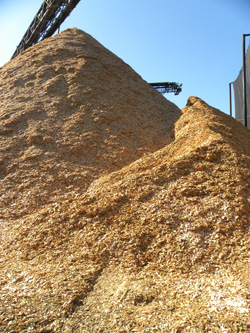 http://ec.europa.eu/environment/forests/timber_regulation.htm
http://ec.europa.eu/environment/forests/timber_regulation.htm
EUTR extracts
Recital (14) In the absence of an internationally agreed definition, the legislation of the country where the timber was harvested, including regulations as well as the implementation in that country of relevant international conventions to which that country is party, should be the basis for defining what constitutes illegal logging.
Recital (16) On the basis of a systemic approach, operators placing timber and timber products for the first time on the internal market should take the appropriate steps in order to ascertain that illegally harvested timber and timber products derived from such timber are not placed on the internal market. To that end, operators should exercise due diligence through a system of measures and procedures to minimise the risk of placing illegally harvested timber and timber products derived from such timber on the internal market.
Recital (17) The due diligence system includes three elements inherent to risk management: access to information, risk assessment and mitigation of the risk identified. The due diligence system should provide access to information about the sources and suppliers of the timber and timber products being placed on the internal market for the first time, including relevant information such as compliance with the applicable legislation, the country of harvest, species, quantity, and where applicable sub-national region and concession of harvest. On the basis of this information, operators should carry out a risk assessment. Where a risk is identified, operators should mitigate such risk in a manner proportionate to the risk identified, with a view to preventing illegally harvested timber and timber products derived from such timber from being placed on the internal market.
Article 1
Subject matter
This Regulation lays down the obligations of operators who place timber and timber products on the internal market for the first time, as well as the obligations of traders.
Article 2 (part)
Definitions
- (e)‘country of harvest’ means the country or territory where the timber or the timber embedded in the timber products was harvested;
- (f)‘legally harvested’ means harvested in accordance with the applicable legislation in the country of harvest;
- (g)‘illegally harvested’ means harvested in contravention of the applicable legislation in the country of harvest;
- (h)‘applicable legislation’ means the legislation in force in the country of harvest covering the following matters:
- —rights to harvest timber within legally gazetted boundaries,
- —payments for harvest rights and timber including duties related to timber harvesting,
- —timber harvesting, including environmental and forest legislation including forest management and biodiversity conservation, where directly related to timber harvesting,
- —third parties’ legal rights concerning use and tenure that are affected by timber harvesting, and
- —trade and customs, in so far as the forest sector is concerned.
Article 6
Due diligence systems
1. The due diligence system referred to in Article 4(2) shall contain the following elements:
- (a)measures and procedures providing access to the following information concerning the operator’s supply of timber or timber products placed on the market:
- —description, including the trade name and type of product as well as the common name of tree species and, where applicable, its full scientific name,
- —country of harvest, and where applicable:
- (i)sub-national region where the timber was harvested; and
- (ii)concession of harvest,
- —quantity (expressed in volume, weight or number of units),
- —name and address of the supplier to the operator,
- —name and address of the trader to whom the timber and timber products have been supplied,
- —documents or other information indicating compliance of those timber and timber products with the applicable legislation;
- (b)risk assessment procedures enabling the operator to analyse and evaluate the risk of illegally harvested timber or timber products derived from such timber being placed on the market.
- Such procedures shall take into account the information set out in point (a) as well as relevant risk assessment criteria, including:
- —assurance of compliance with applicable legislation, which may include certification or other third-party- verified schemes which cover compliance with applicable legislation,
- —prevalence of illegal harvesting of specific tree species,
- —prevalence of illegal harvesting or practices in the country of harvest and/or sub-national region where the timber was harvested, including consideration of the prevalence of armed conflict,
- —sanctions imposed by the UN Security Council or the Council of the European Union on timber imports or exports,
- —complexity of the supply chain of timber and timber products.
- (c)except where the risk identified in course of the risk assessment procedures referred to in point (b) is negligible, risk mitigation procedures which consist of a set of measures and procedures that are adequate and proportionate to minimise effectively that risk and which may include requiring additional information or documents and/or requiring third party verification.

